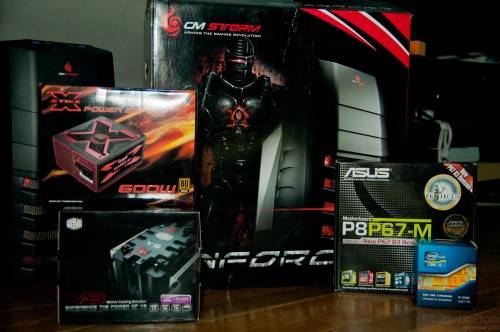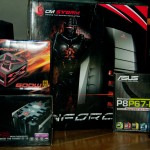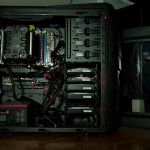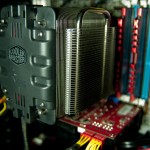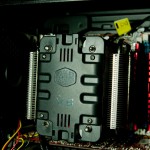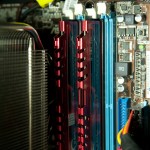I was planning on saving things up for Ivy Bridge but seeing that it’s release date is around 6 months (or more) away, I decided to bite the bullet and splurge a bit to build a new gaming PC.
Here’s what I’ve bought to build my rig:
- Intel i5-2500K
- Asus P8P67-M B3
- G.Skill RipJaws 8gb (2x 4GB 1600Mhz) DDR3
- Seagate 500GB 7200 Sata 3
- Cooler Master V8 CPU Cooler
- Cooler Master Storm Enforcer
- AeroCool Strike-X 80PLUS 600W PSU
Total cost, around 30K Php
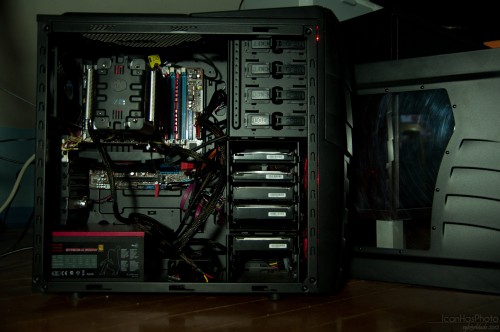 Why the i5-2500k? It’s the most popular CPU in Intel’s current Sandy Bridge line and with good reason. First off, it’s the cheapest unlocked processor, the next item on the list is the i7-2600K and while offers a bit of improvement over the 2500K, the added cost for me is simply not worth it.
Why the i5-2500k? It’s the most popular CPU in Intel’s current Sandy Bridge line and with good reason. First off, it’s the cheapest unlocked processor, the next item on the list is the i7-2600K and while offers a bit of improvement over the 2500K, the added cost for me is simply not worth it.
My initial build had me going with the Asus P8P67-M B3–take note that I say initial because I’m going to replace it soon with a Z68 board (either an Intel one or another Asus board). Mind you if you’re looking for a cheap way to mount your Sandy Bridge processor, the P8P67-M is a good board, It’s got the basics laid down like support for 1600 Mhz DDR3 DIMMs, support for fairly large CPU cooler (in my case the Cooler Master V8), SATA 3 6Gb/s ports, USB3, etc. For my use case however, I’ll be better off going with a Z68 board due to Virtu, Intel’s multi-GPU solution implemented at board-level. Basically the gist of Virtu is that you’ll be using Sandy Bridge’s on-chip GPU until your applications demand something beefier. I’m still looking at reviews but I think my gist is spot on so correct me if I’m wrong as I’m basing this on a several weeks old review from Anandtech. Apparently I read things wrong, Virtu appears to be implemented on application level indicating that there will be a performance hit when you opt to use the IGP and discrete GPU at the same time :/ Darn.
I stuck with a Seagate 500GB 7200 because I still have my 1TB Seagate 10K Raptor which I’m currently using as my primary drive. I wanted to get an SSD for this but that’ll have to wait for my Ivy Bridge (??? hopefully haha) build.
Looking at the list, there’s no GPU from the things I’ve bought. I still have two DX10 GPUs which have served me well, the GeForce 460 GTX and the Radeon 4850 1GB SE. The current build uses the Nvidia card because I had stability issues with the 4850 :/ I’m still going to use for my HTPC once I have purchased the new Z68 board.
Now for the case, I opted for the Storm Enforcer because my first choice, the 690 II Advanced was sadly out of stock :(. Compared to my older case, the Thermaltake V3, the Storm Enforcer was a hell of a lot easier to work with due to it’s massive size and features. The price is well worth the looks too 🙂
I got the v8 and Strike-X PSU for kicks (admittedly it was an expensive choice >_> but it looks quite well with the case doesn’t it?).
Is it worth it?
In a word, yes.
My computer is now leagues faster than my older rig which was based on a Core 2 Duo processor and it feels a lot snappier than my 2011 Macbook Pro who’s performance is quite bottlenecked by the 5400 RPM drive (something I plan to remedy in the near future). In terms of games, I can play Metro 2033 on High (with a few tweaks) and Skyrim on Ultra at 1920 x 1080 resolution considerably well (with a quite a few dropped frames on areas with high particle count thanks to my video card and it’s limited bus :/). One of the best perks I’ve had is mirroring games on my 32 LCD TV so my “audience” can enjoy watching me play :)).
My new build will be an i3-2100 HTPC/Fileserver which I plan to get this January to replace my Buffalo NAS.
